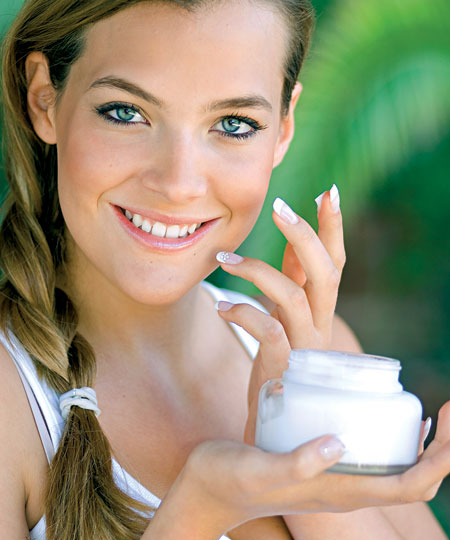Do unusual ingredients really help aging skin?
 What is your opinion of expensive skin-care lines which contain all sorts of unusual ingredients, such as collagen and elastin? Do these products really have an effect on aging skin as they claim to?
What is your opinion of expensive skin-care lines which contain all sorts of unusual ingredients, such as collagen and elastin? Do these products really have an effect on aging skin as they claim to?
In addition to moisturizers, which can temporarily improve the appearance of aging skin by filling in the outer layers with enough fluid to minimize fine lines, numerous cosmetic companies have developed special products to combat wrinkles, many of which contain an irritant to induce a slight swelling and yield the same short-term result.
As well as these irritant-containing products, some formulas include two kinds of oils: those with droplets small enough to penetrate the most superficial layers of the skin and those with droplets large enough to remain on the surface, creating an external film. Proteins, for example, are large molecules, which form a moisture-preserving barrier. But despite claims, protein-based products are no more effective than ordinary oils, such as lanolin, petroleum and mineral oil.
Certain raw materials in some products are included because they resemble the components of the skin that are responsible for keeping the surface smooth and elastic, and it is often maintained that such elements penetrate the deeper layers of the epidermis, thus providing a nourishing environment which is conducive to developing newly formed cells. These ingredients are often mixed with other so-called rejuvenators, such as placenta, collagen, elastin, amino acids, or hydrolyzed protein.
The fundamental truth, however, is that neither collagen nor any of its chemical cousins can affect the skin’s living tissue. No externally applied agent, however natural to real skin, can do anything to restore a single cell. Results are, at best, fleeting and certainly not worth the steep price tags carried by anti-aging formulas, for while the water- retaining properties of the ingredients do cause dried cells to fill out and wrinkles to flatten, the effect can be expected to last no more than a few hours at most. And, while oily barriers can enhance moisture retention, there is clearly no need to invest more than a few dollars to achieve such protection.
Even though I always keep my nails polished and well-manicured, I really resent the two hours or so that it takes to apply the polish and let it dry completely. Do you know of any short cuts to an acceptable manicure? Even half an hour can be an eternity when your nails need doing and you have to be across town in 20 minutes. If you don’t have time for the full procedure, it is still possible to achieve satisfactory results in under 15 minutes.
First, get dressed and made up, and get your keys and change ready so you don’t have to dig around in your bag for them with wet nail polish. Your nails should be in basically good shape, with no nicks or hangnails. This state is the result of good care on a regular basis, and can’t be achieved otherwise.
Next, strip off your old polish with remover. Do it thoroughly so that the new polish will go on smoothly and file your nails just enough to get the edges even.
Do use a base coat – it only takes moments to dry and will help your polish to go on more easily since it covers small imperfections on the nail surface. In this case, don’t use one of the nail strengtheners with nylon fibres – the little threads may show through.
Polish is next. Apply it carefully since it takes longer to fix smears than to put it on properly the first time. Use a fresh bottle of enamel if ou can, as the liquid will be thinner and go on more easily. Failing this, submerge a bottle of enamel that is too thick in very hot water for a moment or two to thin it out. With a little lacquer on the brush, paint the tip of each nail first, then go back and do each nail entirely. You won’t need another coat, since by doing the tips twice, the part where the light shows through has been well-covered. For best results, use flesh-tone polish in case coverage is less-than-perfect.
Lastly, run your fingertips under ice-cold tap water until polish is no longer tacky. To test the dryness of the lacquer without leaving a mark, tough your tongue lightly to the last nail you painted. Brush on an oily quick-dry solution, don’t use your hands carelessly, and you’re ready to go.


